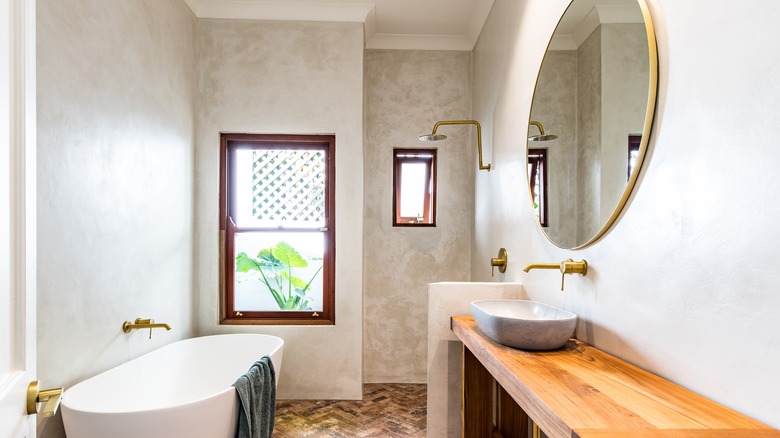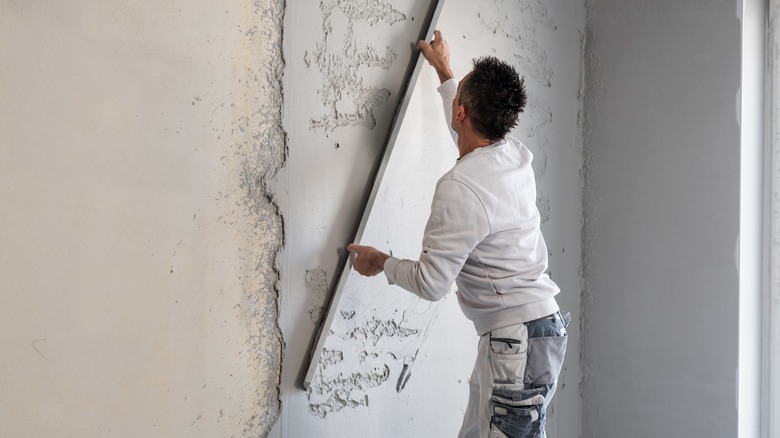The Bathroom Wall Design That's Completely Changing Showers
For decades, tiled walls have been the go-to construction design for bathrooms, especially showers, in the U.S. However, a growing number of American households have seemingly deviated from this and started exploring other design options. One option that's been gaining traction recently is plaster wall, and it's mostly thanks to home designers like Linda Hayslett, founder of Los Angeles-based LH.Designs, who has been championing this material over the tile and grout combo on her projects.
"If Europeans use plaster for their bathrooms and showers without tile, then we're going to see more of that catching on as people don't want to deal with cleaning grout," Hayslett told Good Housekeeping while discussing the different trendy design options for modern bathroom remodels. Since plaster wall has a continuous surface, homeowners don't have to worry about dirt building up in grout lines and joints.
Another reason why Hayslett favors plaster walls is that it is entirely waterproof when done right. One issue that is often overlooked with tiled walls is how the grout lines or the gaps between the tiles are very much prone to mildew and mold growth, since showers are almost always damp. "Plaster is used on the outside of buildings, so you can still use it on the inside and, obviously, if it's used outside, it has to be waterproof, because there's weather outside. I don't think many people realize it could be used inside for a shower as well," she said in a separate interview with Architectural Digest.
Things to consider before switching to plaster shower walls
Since plastering does not require as much of a laborious job as tiling, many tend to assume that it is easy to pull off as a DIY project. While this may be true for experienced DIYers, there are so many things to know about plaster walls, especially for first-timers, that it's best to leave their installation to expert hands. Besides, achieving a Venetian plaster finish on a wall is no easy feat, as it requires skill and meticulous attention to detail.
If applied incorrectly or without proper waterproofing layers, your plaster wall can become prone to cracking or water damage. When this happens, the structural integrity of the wall becomes compromised, and it will only be a matter of time before it starts breaking or coming off. Worse, your wall can become a biohazard when mold starts growing in between the cracks. At this point, repairs will be trickier and a whole lot more expensive, particularly if specialized waterproof plaster finishes like Tadelakt or microcement are involved.
It is also important to note that different types of plaster demand different plastering techniques. For instance, since cement plaster is a bit difficult to smooth compared to other plaster types, gypsum plaster is applied on top of it to achieve a smooth surface. Meanwhile, for walls that need to breathe, especially in older homes, lime plaster is the best option, and it is commonly applied in three coats for best results.

